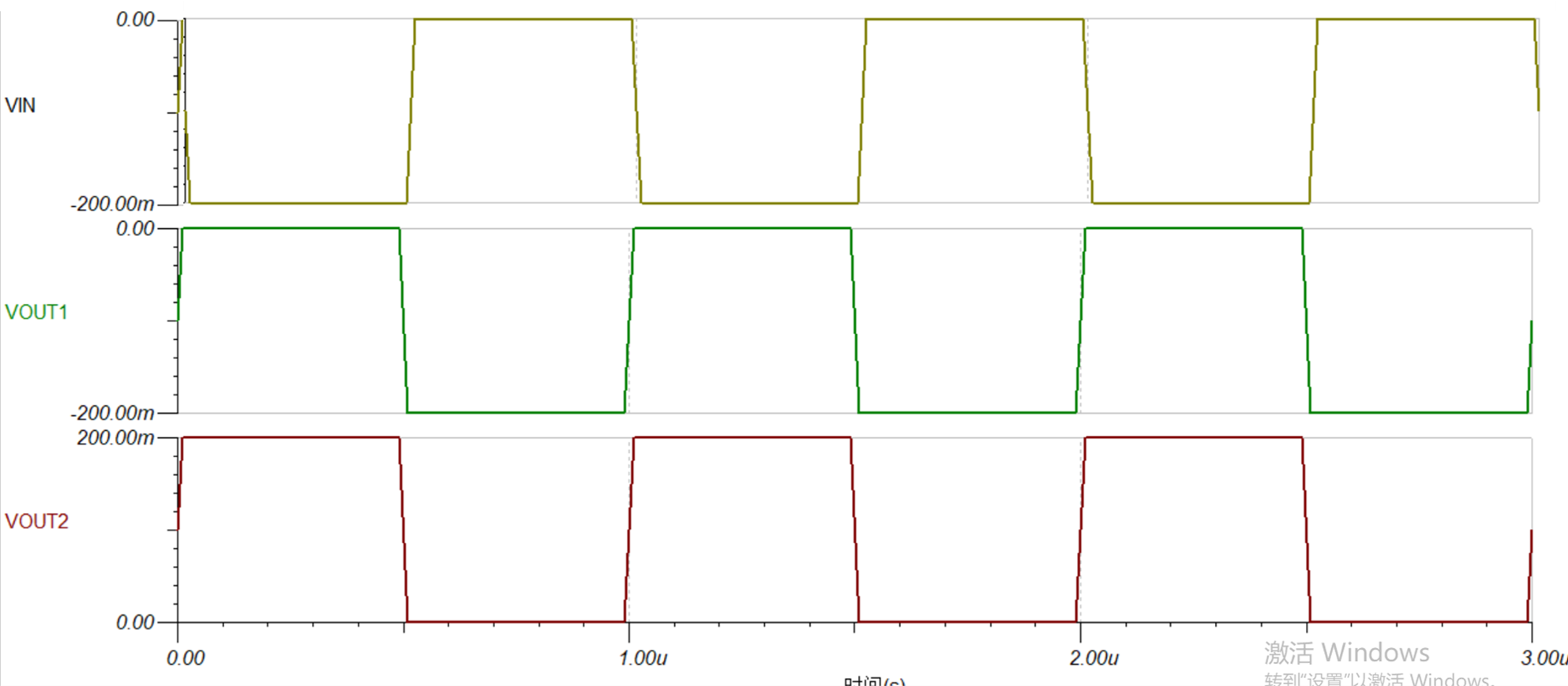Hi team,
I need to convert a 1Mhz square wave VIN whose VH is 0V and VL is -0.2V to a 1Mhz square wave as VOUT1 or VOUT2 which is shown below. The phrase has to be inverted and the VPP could be VOUT1 or VOUT2.
1. Do you have any solution according to my issue? The circuit should be as simpler as possible and the cost should be as low as possible.
Best Regards
Wesley Huang




